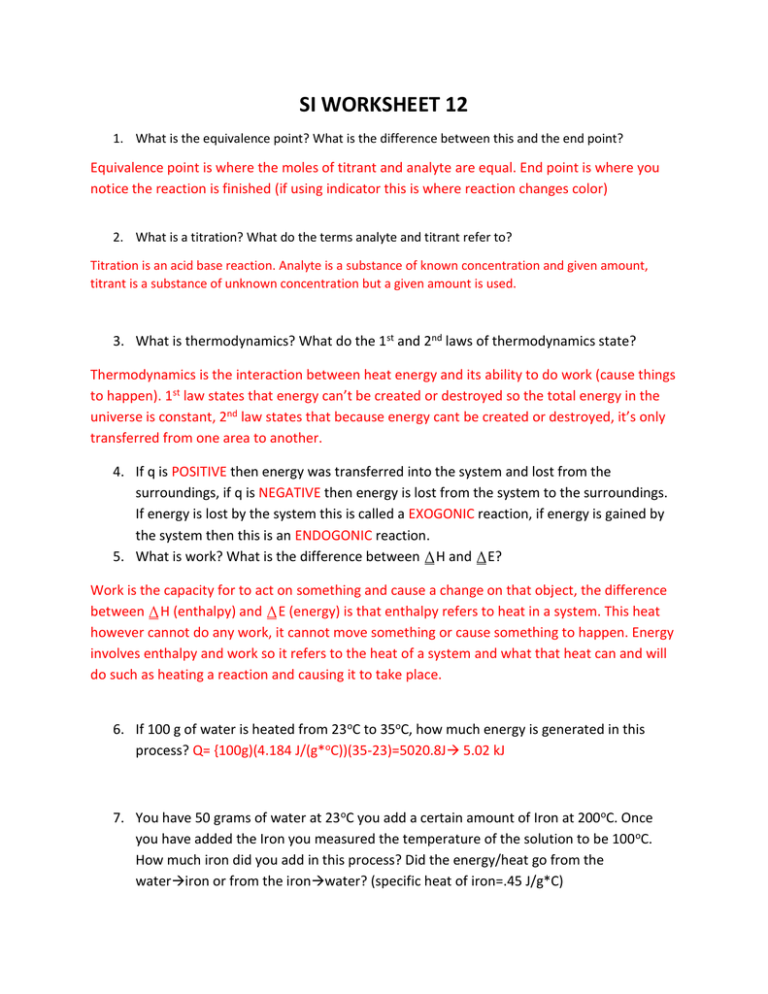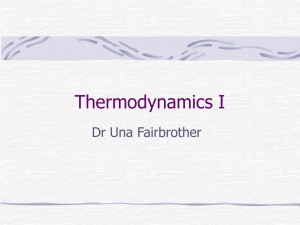si worksheet 12
advertisement

SI WORKSHEET 12
1. What is the equivalence point? What is the difference between this and the end point?
Equivalence point is where the moles of titrant and analyte are equal. End point is where you
notice the reaction is finished (if using indicator this is where reaction changes color)
2. What is a titration? What do the terms analyte and titrant refer to?
Titration is an acid base reaction. Analyte is a substance of known concentration and given amount,
titrant is a substance of unknown concentration but a given amount is used.
3. What is thermodynamics? What do the 1st and 2nd laws of thermodynamics state?
Thermodynamics is the interaction between heat energy and its ability to do work (cause things
to happen). 1st law states that energy can’t be created or destroyed so the total energy in the
universe is constant, 2nd law states that because energy cant be created or destroyed, it’s only
transferred from one area to another.
4. If q is POSITIVE then energy was transferred into the system and lost from the
surroundings, if q is NEGATIVE then energy is lost from the system to the surroundings.
If energy is lost by the system this is called a EXOGONIC reaction, if energy is gained by
the system then this is an ENDOGONIC reaction.
5. What is work? What is the difference between ⍙H and ⍙E?
Work is the capacity for to act on something and cause a change on that object, the difference
between ⍙H (enthalpy) and ⍙E (energy) is that enthalpy refers to heat in a system. This heat
however cannot do any work, it cannot move something or cause something to happen. Energy
involves enthalpy and work so it refers to the heat of a system and what that heat can and will
do such as heating a reaction and causing it to take place.
6. If 100 g of water is heated from 23oC to 35oC, how much energy is generated in this
process? Q= {100g)(4.184 J/(g*oC))(35-23)=5020.8J 5.02 kJ
7. You have 50 grams of water at 23oC you add a certain amount of Iron at 200oC. Once
you have added the Iron you measured the temperature of the solution to be 100 oC.
How much iron did you add in this process? Did the energy/heat go from the
wateriron or from the ironwater? (specific heat of iron=.45 J/g*C)
-Qsystem= Qsurroundings * the system and surroundings are what you determine them to be, I
choose the Fe for my system and the water as my surroundings*
-(X)(.45)(100-200)= (50)(4.184)(100-23)45X=16108X=358g Fe.
Energy left the Fe and went to the water as indicated by their signs.



